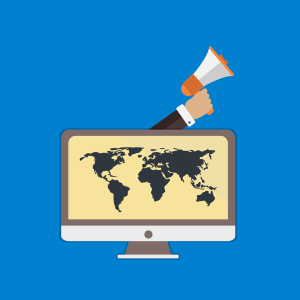Consumer Research Methods
Get Started
Call-for-action
Tel: (+234) 802 320 0801, (+234) 807 576 5799
Email: info@Stonehillresearch.com
Office Address: 5, Ishola Bello Close, Iyalla Off Street, Alausa, Ikeja, Lagos, Nigeria
Introduction
In today’s world of increasing competitiveness and the growing role of technology, culture, and the economy, consumer preferences change rapidly. To compete effectively, these changes have to be responded to and forecasted for by business. Here lies the concept which encompasses customers: who they are, what they want, and where they are coming from. This is the reason why consumer research is highly pertinent in this connection.
Detailed consumer research enables organizations to obtain information useful in decision-making processes. They are very important for better product development, enhancement of services, customer segmentation, and marketing and in fact to unlock long-term organizational success. It means that without properly conducted consumer research a business not only makes assumptions about its customers but will also make wrong decisions and lose more opportunities.
The Importance of Consumer Research Methods
Each method enables organizations to analyze consumer psychology, behaviors, and preferences from a different perspective. Each method provides unique insights that are essential for answering key questions about the market, such as:
Who are our customers, and what drives their buying decisions?
How did they perceive our brand compared to competitors?
What new features or services will meet their needs?
Knowledge of these dimensions enables business to ensure continuous creation, better target individual market segments, and therefore, enhance customer value perception. Appropriate use of consumer research methodologies helps to make certain that the strategies that are developed are founded on factual, meaningful information: not hunches.
Benefits of Consumer Research Methods
Informed Decision-Making:
Information gathered through research enable organizations to make right decisions at the right time; for example when to introduce a new product, to expand into a new market, or to modify a marketing campaign.
Customer-Centric Strategies:
Thus, by knowing the customers and their problems businesses can start catering for the needs and demands of these target group of users, which will result in increased satisfaction and brand loyalty among the customers.
Competitive Advantage:
Understanding the consumer keeps businesses in anticipation of a competitor by having knowledge on how the economy functions, the gaps to fill, opportunities to seize, and risks to avoid.
Risk Reduction:
Decisive market research reduces the likelihood of the product launch or advertising campaign failure because strategies are based on consumers’ preferences.
Enhanced Marketing Effectiveness:
Consumer research provides consumer understanding which aids in fine-tuning marketing appeals and in general, helps avoid turning off the target audience.
Marketing research is no longer a mere frill but a vital component in the current world it is almost impossible to do business without data that is obtained from market research. The selection of the research methodologies enables the firms to gather relevant information that guides their operation and, in the process, helps them to grow.
Purpose and Focus
This white paper/blog post will endeavor to introduce the reader to a range of consumer research techniques, with the end view of providing practical guidance to businesses seeking to undertake consumer research to gain insights into their target consumers.
The post will overview different types of research methods: from the offline ones that are also used in contemporary society to the online ones, from the primary to the secondary, and from the qualitative to the quantitative ones thus showing the reader how business people collect relevant consumer data.
Further, it will bring up advanced online and mobile research methodologies which are more preferred today because of the ease that is associated with online research and the enormous number of people who could be reached. Other study approaches such as observation research like mystery shopping shall also be covered for their real-time customer interface perspective.
It will post will help the readers to know how to conduct the Research on the Consumers and will also suggest different tools and software that can be used to carry out the research more efficiently and effectively and will also suggest the Businesses on how they can conduct the research not only to gain the data but to also be able to get Strategic Insights from the data that is collected.
Key Points Covered:
Traditional Research Methods:
Cross-sectional questionnaires, intercept, conventional interviews, most group discussions.
Digital Research Techniques:
Multichannel research methods include web-based questionnaires, social media monitoring, and mobility-based research.
Primary vs. Secondary Research:
Direct consumers’ information gathering vs. information analysis.
Qualitative vs. Quantitative Research:
As a distinction between customer approaches: identifying the motives of customers (exploratory, nonnumerical, Text-based) vs. figures and counting (quantitative).
Emerging Techniques:
Mobile surveys and Ethnography and Modern feedback and response systems based on Artificial Intelligence analysis.
Observation Research:
Branded private investigations live consumer research.
Best Practices:
Identifying objectives, choosing the method for data collection, and data quality.
Tools and Software:
It includes survey tools, social media analytics, and sophisticated insights solutions.
Consequently, this paper shall provide the necessary information to enable any business organization to select the proper consumer research technique and utilize advanced technological tools as a way of enhancing their competitiveness within the competition-dominated market.
The Importance of Research-driven Strategy
In the current competitive world, it is therefore important to engage in consumer insights that drive innovation as well as a customer-centric approach. To comprehend customer requirements and expectations it is possible to design applicable business strategies enabling enterprises to stay relevant and continue to thrive.
Fueling Innovation
Consumer research is useful to any business since it brings known issues and/ or new opportunities in a business setting. Such views constitute ideas for developing new products and improving the already existing ones. For organizations, it is more beneficial to understand customer pains to create new forms of offerings that solve issues or remove customer pains and meet their expectations on a deeper level.
Improving products and services.
Consumers’ feedback obtained through research studies shows areas where current merchandise can be enhanced. This may involve changing an element of the product, adding new functions to an existing product, or enhancing how an organization handles its customers. Such improvements are not arbitrary but data-driven research thus making any launched product improvement solution likely to be successful in the market.
Customer Experience Solutions
Indeed, it may be argued that the customer experience is one of the most vital driving forces that can help form brand associations, and, thus, businesses will continuously search for ways to ensure all customer interactions that involve their brand are positive.
Data-Driven Decision Making
A research-driven strategy transforms the decision-making process from being done based on anticipation reaction. That is why when decisions are made based on insights from consumers, businesses can be able to predict shifts in consumer behavior, market trends, and competition. This minimizes instances of strategy incoherence because the businesses can establish foresight of strategies while at the same time making strategic decisions based on research.
Customer-Centric Focus
In simplistic terms, businesses that apply research as a strategy align their business ventures, organizational layouts, products, and services to the real beautiful hearts of the audience. It also fosters a more intimate connection between the manufacturer and consumers thus building loyalty and word of mouth. Those corporations who take time to understand their customers and meet their demands will not struggle much to sustain market advantage in maturing product sectors.
Overall, a research-based strategy enables organizations to think creatively, adapt to change, and be client-value-centered to thrive as they compete in a dynamic market environment.
Methodology: Building a strong foundation for customer research
Gathering Research Data Based on Business Objectives
Any good consumer research has to be guided by the research objectives which must align with the overall business objectives. When it comes to the selection of any research method, businesses must first define what they want to accomplish.
Do you want to enhance your product design, increase consumer/customer satisfaction, enhance your marketing strategies, or enter new markets?
If consumer research is not targeted, it will be uncoordinated, and the results that are generated will be unhelpful or inconsequential to organizational objectives. Defining the purpose—whether it is to identify customer concerns, examine brand image, or assess the development of certain trends—guarantees that not only the study results can be used practically but also help promote the business’s stable and sustainable growth.
By ensuring this alignment is kept intact, firms can avoid the pitfall of archiving more data than is necessary and instead look at data that will inform strategies. For example:
If the objective is to advance in product design, for example, the emphasis might be on customers’ needs.
For customer satisfaction improvement, the objective can focus on the search of the critical touchpoints affecting the customer.
Combining Research Methods for Depth and breadth
A good consumer research approach often involves several techniques of research to have both type and depth of information. There is no way of approximating the total range of consumers’ activities, perceptions, and preferences.
Due to the case of the combination of primary and secondary, as well as qualitative and quantitative research, offline and online approaches, companies obtain rich insights into consumers.
Primary Research: This includes collecting new data from the consumers through surveys, Interviews, focus group discussions, or through observation. The dashboards offer specific generated insights about this business.
Secondary Research: Categorizes current information regarding the Detailed industry reports, market surveys, and competition analysis. It is a time and cost-efficient method of pooling more diverse data about the broader market.
Quantitative Research: Approaches that include carrying out massive questionnaires or data analysis give you quantitative data that can be quantified and held against a different period. For instance, customers may be asked a question that has to do with the choice of the product, and 80% of them are likely to point to a particular aspect they like.
Qualitative Research: In-depth interviews, focus groups, or observational studies for instance picture ques why consumers behave in such a manner. This data, on the other hand, provides contextual information. For instance, with interviews, there may be feelings that may propel a client into making a given purchase.
The strength of using both quantitative and qualitative research methodology would be the ability to present data that has statistical credibility as well as individual facts and feelings. For instance, businesses can use sample surveys to get an idea of the population tendencies and then use individual interviews to find out more explanations for such tendencies.
Moreover, a mix of offline and online collected data (for example social media content, web survey data offline in-depth interviews, and mystery shoppers) allows businesses to consider both online and offline customer behaviors.
Example of a Hybrid Approach:
Step 1: Administer an online questionnaire to obtain numerical data regarding the satisfaction and frequency of use of the product offered.
Step 2: Additionally, use surveys and conduct a further interview to find out the causes of satisfaction and dissatisfaction with their expectation level.
Step 3: Engage in the use of social media monitoring to analyze the sentiments and feedback on a real-time basis.
When these two are integrated, an organization can collect data that is both strategic and operational for the organization’s decision-making. This way, decisions are made with real analytical information and not presumption, thus being more customer-oriented.
Research Planning
First and foremost, which must be achieved before jumping into the consumer research process, are the critical aspects of effectiveness to address for businesses that want their consumer research to correspond to their goals.
Target Audience
It is crucial to outline your consumers conveniently since the approach is based on focused and accurate investigation. Who you are researching – whether it is current customers, potential prospects, or specific market segments – helps to make the information collected and analyzed directly applicable. Setting a target for the right group can be achieved without the use of buyer persona or customer profile to extract intelligence that would entail the right actions.
Budget & Resources
There are always limitations to any research and knowing your limits in the research budget helps choose the right methods to use. Some methods such as online surveys or secondary research will be the least expensive whereas focus group interviews or extensive and intense interviews will be most expensive. When employing these techniques, businesses should ensure that the costs of using the methods bear good returns on investment.
Timeline
It is thus important to have a pragmatic period to adequately accommodate for both the collection and analysis stresses. Some techniques, say surveys, may be completed in a short period while others like the focus group or interview techniques may take a lot of time to schedule and conduct. However, frequency for data analysis is also required particularly when employing more elaborate quantitative analysis processes.
Types of Consumer Research Method
Primary Research Methods
Definition:
Market research, as opposed to primary research, entails using secondary information to develop additional data concerning your target market. This information brings out first-hand data on your business requirements, which are usually missing when using generalized statistical data. Some of the most popular primary research techniques are presented below.
Methods:
– Surveys:
Surveys are formal and effective means of gathering large amounts of data from a large population. They can be conducted online or by using the postal services or face-to-face interviews. Multiple questions (yes/no or multiple choices are good for getting numbers while opinion/feel questions allow for more depth).
Best for Market research, surveys, or tracking overall impressions of a product or a service.
In-depth Interviews:
In timely interviews, there is an opportunity to collect a lot of detailed and subjective information about the consumers, their problems, and their choices. Such conversations are useful to get to the root of customers’ behavior, which is crucial in the customer-oriented decision-making process.
Best for: For instance, when a company wants to achieve a greater understanding of its customers, when there is a need to investigate detailed consumer behaviors, or when a firm wants to gain an understanding of specific and usually small markets.
Focus Groups:
Focus groups involve a small group of consumers who are asked about particular products, services, or promotional content. They are especially valuable for obtaining group perceptions to learn how people think or feel about a particular product, thus, getting insights into the psychological motivations to purchase a product.
Best for Advertising appeal pre-testing before the actual campaign is carried out.
Benefits of Primary Research:
Related to your business on a precise level.
Provides answers based on the specific questions that you have asked them.
Relatively very rich with first-hand, up-to-date data.
Secondary Research Methods
Definition:
Secondary research entails the use of data from the databases of these other organizations; reports from the industry, and government, as well as published works, papers, and journals among others. This may however be more cost effective and time-saving than primary research but is less likely to be specific to the requirement of a particular study.
Methods:
Literature Reviews:
From the survey of academic papers, such as reports or any other scholarly document, a business entity gains knowledge about what is known about consumers markets or certain industries.
Research Methodologies
Qualitative Research Methods
Definition:
It is a type of research that collects information that is not in figures and which is used to unearth emotions, perceptions, and attitudes. It seeks in addition to the goals of descriptive analysis, to provide the ‘why’ of behavior, feelings and experiences of consumers. These methods make it possible to involve the qualitative aspect of consumer knowledge and enrich numerical data with context and additional opinions.
Methods:
Focus Groups:
It is a research technique where a targeted group of people is gathered to talk about one item or idea. A moderator controls the discussion and encourages participants to express their attitudes, views, and, feelings toward the topic. A focus group is instead useful when the point is to understand the beliefs, feelings, and attitudes of a group regarding a particular brand or product.
Best for: Examining the feasibility of a new product or perusing a new marketing strategy or ascertaining consumer impressions of a brand.
In-depth Interviews:
These are one-to-one interview sessions, which focus on uncovering personal experiences and affective states of a consumer. These offer businesses unique information to understand reasons consumers took specific actions, what they want that is not available, or what they go through. Exploratory research interviews allow discerning basements and covered up sexual feelings and experiences that may barely feature in wide-ranging surveys.
Best for: Learning more about multifaceted problems, discussing taboos, or analyzing the affective angle of consumers’ decisions.
Observation Research (Including Mystery Shopping):
Consumer observation occurs when the researcher can study consumer behaviors in natural settings but without immediate and direct interaction with the consumers. Observation research can be carried out in the physical environment (like retail stores) or cyberspace (such as websites). Mystery shopping is a type of observational research whereby informants conduct secret assignments to assess the quality of service that is offered by an organization as well as interactions with the customers.
Best for: Measuring behaviours as they occur, judging the effectiveness of a service delivery approach, and observing how consumers engage with a product or service in a live environment.
Benefits of Qualitative Research:
Offers more refinement about the sentiments, reasons, and perceptions of the consumers.
Provides context to behaviors that raw figures lack; gets to the heart of the issue and gives the reasons for certain actions.
Converses as well as improving hypothesis and coming up with more tangible hypothesis to be analyzed quantitively.
Quantitative Research Methods
Definition:
Quantitative research centers on gathering quantitative data, which is used to assess patterns, relationship, and trends. This method is systematic and enables firms to determine the proportion of consumer behaviour or attitude in a wider population. As a method, quantitative research is excellent for making forecasts, making a confrontation, and confirming hypothetical assumptions scientifically.
Methods:
Surveys:
questionnaires entail administering standardized forms of questions to a large population with the intention of establishing the quantifiable nature of people’s beliefs, actions and characteristics. Online, phone or face-to-face interviews are used and the questions posed are usually closed since the aim is to have affirmable answers.
Best for: Information-gathering purposes such as, measuring customer satisfaction, monitoring product usage or gathering demographical data.
A/B Testing:
A/B testing is a form of experiment analysis where two forms of a product, website, or a marketing tagline are initiated in a population and analyzed to observe which of the two is popular among the population. For instance, two landing pages may be used to check which among them will produce more conversions. This method provides accuracy in decision-making since it provides the ability to compare the efficiency of options.
Best for: Experience improvement, product enhancement, or marketing effectiveness analysis.
Online Analytics:Web analytics is the process of measuring, monitoring, and reporting digital engagement on the web, within applications, or social networks. Services from Google Analytics to the specific information of Sustainability Performance Metrics include click-through rates, bounce rates, and conversion rates.
Best for: Gauging how customers interact with the company’s websites or social media pages, managing web marketing campaigns, and analyzing customer experiences with online products.
Benefits of Quantitative Research:
Can give factual information that can easily be tested for statistical means and medians on the trends involved.
Enables businesses to establish patterns where they can track changes over some time and be able to make good predictions.
This applies when the researcher wants to present findings that will have an application across a large population.
In addition, credibility, dependability, transferability, and confirmability are the issues that should be considered when using a mixed-methods design.
A combination of qualitative and quantitative techniques is effective in providing businesses with complete information about consumers. While qualitative research explores reasons why and how human behaviors, quantitative research supplies the data to explain when, where, and how frequently similar behaviors occur.
In this way, businesses can make highly informed strategic decisions that are based on not only the actions of consumers, but also on their motives for those actions.
Emerging Research Methods
Online Research Methods
Definition:
Research customers or users involves researching consumers using online tools and channels with a view of getting real-time insights or getting data in the background. This approach leverages the consumer digital trail on media, Web 2.0, and Social Networks. Online methods are convenient and effective, can reach many people at once, and can benefit businesses that do not have to be restricted geographically.
Methods:
Social Listening:
Social listening, means the process of following brand mentions, industry topics, and social conversations that are posted on various social media platforms. As a result of community media monitoring, you can identify trends within the market, your competitors, or your industry. Two such programs Hootsuite and Brandwatch help to monitor brand mentions and conversations to some extent.
Best for: Measuring the attitude of a brand, monitoring people’s response to marketing initiatives, and detecting new trends as they occur.
Online Surveys:
These surveys can be created and administered using online tools that include Google Forms, SurveyMonkey, or Typeform. Such FSAs offer a quick and cheap method of eliciting feedback from a wide audience base that can be spread across a large geographical area. Online surveys can be taken through emails, use of social networks or websites, and are therefore convenient and easy to administer.
Best for: Gathering customer feedback, market analysis, or product satisfaction measures on a very short notice and on a large scale.
Web Analytics:
Tools used to monitor website usage and activity include; Google analytics. Measures like page visits, click – through ratios, bounce ratios, and conversion ratios help business establishments to understand consumer’s Bahasa Level behaviour on an organisation’s digital assets. Such a method helps to get useful information about the effectiveness of certain functions and the overall effectiveness of a website to the users.
Best for: Multidisciplinary understanding of digital behavior, enhancing user experience, increasing website effectiveness.
Mobile Research Methods
Definition:
Mobile research uses mobile devices such as the cell phone to administer data to the consumer regardless of their location. Concerning the use of mobile devices by consumers, this method can obtain feedback on the go and obtain real-time feedback through mobile media such as SMS, applications, and push notifications.
Methods:
SMS Surveys:
SMS surveys are short surveys that are sent using text messages; they are common where quick responses are expected. As SMS is left an active interact communication medium these survey response rates are relatively higher compared to those of emails. These are suitable to be used where, for instance, there is the need to get the sentiments of the customers right after the purchase or occasion.
Best for: Gathering short and immediate feedback as soon as possible after a service encounter or some form of exchange.
Mobile Tracking:
Mobile tracking encompasses application usage tracking, geolocation information, or interactions inside the application. This will enable businesses to understand how people are using their mobile applications and what features are being used commonly, as well as ways in which the users are navigating the mobile application. Gathering the location details can also help retailers and other event-driven organizations understand traffic density within a given location.
Best for: Learning more about consumers’ usage of the apps, collecting behavior data, and monitoring activities in certain regions.
Push Notifications:
Mobile applications used using push notifications enable businesses to send direct requests for feedback. These notifications can be unique and based on specific time intervals as well as sent after a particular phase, for instance, when someone buys a product or uses a particular option in the application. The immediacy of the push notification guarantees an instant response from informed and involved audiences.
Best for: Collecting feedback right after the interaction, increasing the usage of applications, and improving customer interaction in the moment.
Advanced Research Techniques
databases, identifying, observation research, including mystery Shopping.
Definition:
Observational research concerns the investigation of consumer behavior concerning a product or service offering without interfering with this behavior in person or digitally. It offers results as actual consumer actions or decisions promptly and in actual time. One type of observation study is mystery shopping in which, paid undercover researchers pretend to be ordinary customers to gauge service delivery, product display or stores’ ambiance.
Best for:
For example, assessing service quality in either retail or hospitality industries.
Measuring customer touchpoints from the initial moments of experiencing a store/website up to the point of purchase.
Gathering information about current consumer behavior, including how customers interact with physical, online, and in-app spaces, what attracts their attention in shops, websites, and apps, and how consumer decisions are made.
Tools:
Heatmaps (for digital environments):
A heatmap, for example, will identify and pin on a map where users spend most of their time on a webpage or engaged an app by tracking the movement of the mouse. It thus gives us an understanding of how the users engage with the material and what the appeals to them.
Best for Recommendations of website or app areas of interest/usage by tracking the client’s discomfort or interest.
Eye-Tracking Software:
Eye-tracking technology captures the parts of a product, service, or webpage a person looks at when viewing it. This technique also proves good for evaluating visual attention and how consumers inspect products on shelves or while browsing websites.
Best for: Identifying which aspects of the product elicits the most attention, or how people scan product packaging, a retail space, or a website.
Observation research is useful for collecting practical naturalistic data that can hardly be received by the use of questionnaires or interviews. It assists firms to know areas that require improvement in terms of service provision, and other unnoticeable issues affecting consumers.
Best Practices Effective Consumer Research
Clear Research Objectives:
There are several strategies that should be followed from the onset in an attempt to come up with a suitable research project as follows; Whether you need information about customers’ satisfaction, new product opportunities, or marketing techniques, well-defined objectives make your study meaningful and relevant.
Leverage Mixed Methods:
This therefore indicates that consumer behavior can be understood by conducting both primary and secondary research, qualitative and quantitative research methodologies. Through this study approach, the researcher can capture both large-scope quantitative results and small-scope qualitative findings on the consumer experience.
Ensure Data Accuracy:
Data accuracy is critical. One should make use of formal tools for data gathering and data analysis to avoid poor results. Make sure you are not biased and to ensure that your data is valid make sure the samples you have collected are relevant to the audience you are targeting.
Regular Updates:
These consumer trends are dynamic and the general market conditions change with time therefore, frequent checks and adjustments should be made. Periodically updating your data makes certain that in fact, your business decisions are being made out of current trends and discoveries.
Analysis of Tools and Software
Survey Tools:
In this case, SurveyMonkey, Google Forms, and Typeform.
These are friendly interfaces and are ideal for developing and managing online questionnaires. They allow designing the survey in any way possible and also have a feature of analytics where one can view the respondent’s feedback.
Best for: Enterprise-Level Research
Qualtrics
A more developed instrument that has versatile functions as a tool for the development of sophisticated surveys and analytical work, suitable for organizations requiring elaborate data.
Best to provide comprehensive survey research for organizations, detailed analysis, and division into various sections.
Analytics Tools:
Google Analytics
Can give essential data about the website traffic and user activity as well as their conversion. It assists in identifying how users engage within a company’s website.
Best for: Monitoring user engagement, enhancing the accessibility of the website, and enhancing the use of the website.
Hotjar
Utilizes a heat map of visitor recordings and feedback polls and makes use of a graphical representation to monitor the activity on your webpage.
Best for Acrobat allows the user to have an initial glimpse at the look of the website and gives clues on what needs to be done.
Tableau or Power BI
The tools enable you to present your research data in such a manner that each piece of information is presented in a graphical form on a dashboard.
Best for: Reporting tools for the development of the graphic presentation of large data in simple and traceable/analyzed reports and dashboards.
Social Listening Tools:
Hootsuite, Brandwatch, Sprout Social.
These tools enable you to listen to **social media conversations, follow, and analyze brand or keyword sentiments.
Best for Tracking social trends, monitoring competitors, and analyzing consumers’ opinions at scale.
Qualitative Data Tools:
NVivo and Dedoose
Both are excellent for qualitative analyses based on semi-structured interviews, focus groups, or any survey in which respondents are allowed to respond in their own words.
Best for: Academician in the process of trying to search for themes narrative patterns and subtleties within research texts that may not be apparent from numeral qualises.
Common Errors to Avoid in consumer Research
Poorly Defined Objectives:
This, however, cannot beat one of the most devastating errors ever witnessed in consumer research, namely unspecific objectives. Lack of well defined research objectives causes research that yields unworkable or non-useful information to the researchers. To avoid this, always make your objectives clear, and quantifiable and be certain that you are chasing business objectives.
Sampling Bias:
Selecting a non random sample in a research study will put your results in jeopardy due to bias. For instance, it becomes hard to get the preferences of the entire population you intend to serve from a particular demographic. To overcome this, make sure that your sample comprises of a diverse population than the general population you would wish to study. Use means of random sampling methods or the use of stratified sampling to create fairness in the sample size.
Overloading Respondents:
The last problem with long surveys is that respondents can become inundated by long questions, leading to boredom and low-quality responses. This is because; surveys should not be lengthy but straight to the point. When framing questions avoid complicated questions that would eat into the respondent’s time. It may be useful to bribe people into surveying while also being mindful of the survey’s length.
Neglecting Data Analysis:
Collection of data is one thing, but data analysis is yet another thing as deeper analysis is often required to get useful information. The ignorance of data can lead to a lack of identification of the opportunities as well as wrong perceptions of consumer behavior. Analyze the data through the proper method and tool analysis and locate appropriate feedback from the data. To check the validity of such results, do not leave them untouched – update them over time due to shifts in the market.
Therefore, by minimizing such mistakes, an organization will be able to improve the efficiency of consumer research and get better insights for decision-making.
Banking on How to Implement Consumer Research
Embrace Technology:
Take advantage of the best available resources in the market in the process of conducting your consumer research. Incorporating the use of superior and sophisticated survey tools, analytical tools and social listening tools is very effective and time-saving. Efficiency can also be gained by using automation where the onus of data analysis and retrieving the actual statistical data reduces a team’s workload and allows room for interpretation and decision-making.
Combine Methods:
Utilize quantitative data together with qualitative perspectives; use both, quantitative and qualitative analyses. Whereas using quantitative data is useful as it has statistical accuracy, qualitative research data gives depth and background information. When complementing these methods, it would be possible to build a more comprehensive view of the consumers. For instance, if a study starts with the exploration of a concept across a population, it is followed by an analysis of the concept through interviews in an attempt to discuss the observed trends or outliers in data.
Iterative Research:
The other strategy that should be adopted is not to perceive consumer research as a one-time process. Iterative research means using consumer data to continually gather feedback and modify the plan as needed on an ongoing basis. It makes it possible for businesses to adapt easily to market and consumer needs to ensure that they deliver what the customer wants. Use follow-up surveys or engagement data that way your insights grow in tangent with your consumers.
Ironing out these recommendations allows businesses to build an efficient framework for consumer research, which would be effective and versatile in its ability to provide valuable information while being able to navigate the constantly shifting nature of consumers.
Final Thoughts: Consumer Research in the Future
Integration of AI and Machine Learning:
AI and Machine learning, are going to make a huge impact on the future of consumer research. Understanding these advancements will mean that organizations will be able to carry out analyses on large volumes of data at a faster and better accuracy to allow for prediction to inform strategic decisions. AI can also detect trends within consumption and, therefore, can make predictions on future trends and potential areas of improvement.
Consumer-Centric Business Models:
With advancements in technology, there is a need for consumer-driven business strategies that align with the buyer. This implies that the firms have to keep on developing various effective research methods as a way of adapting to this change. When a business organization becomes agile, it can quickly adapt to consumers’ changing demands. This involves feedback machinery, market reviews from time to time and constant awareness of market trends.
In conclusion, the consumer research environment is best described as dynamic and continues to change as a result of the technologies, consumers’ behavior, and preferences. Hence by implementing the use of AI consulting and remaining conscious of the needs of the consumer, businesses are encouraged to gain a more profound understanding, encourage innovation, and ultimately improve customers’ experiences given the stiff market competition.
These trends will have to be adopted for firms that seek to become successful in future consumer research environments to do so successfully.
Key Takeaways
Diverse Methodology is Key:
Both offline and online research techniques must be used to gather sufficient information about the consumers. The integration of quantitative and qualitative techniques enables businesses to obtain both attitudinal and behavioral data to help with their decision-making.
Avoid Common Pitfalls:
To conduct consumer research that yields useful results, objectives must be clearly defined, a sample survey must target a fair representation and there must be the ability to analyze results. These mistakes include a lack of clear objectives, inadequate sampling, and inadequate attention to analysis; their exclusion will lead to the improvement of reliability as well as the relevance of the findings that directly impact the outcome.
Technology Enables Growth:
As technology persists to become a part of the consumer research process, especially AI-activated information and Mobilities, the advancement will remain in integration. When incorporated by firms, these tools can provide a quicker and more accurate understanding of consumer requirements and enable the firms to respond to the change proactively to achieve long-term sustenance in a convenient environment in a competitive market.
When adopting these insights into consumer analysis, your undertakings will be more effective in supporting consumer behavior analysis for your business.
Conclusion
It is, therefore, possible to conclude that a good and effective consumer research strategy is multi-method, technologically advanced, and ‘best practice’. Not only does this approach give rise to valuable and more comprehensive information but it also assists businesses to make rational decisions as to how best to progress and transform. Understanding consumers via different research methods can help organizations to adapt a competitive market environment.
Next Steps:
Here, we promote cross-functional adoption of a research-centric and systemic approach to consumer knowledge. Thus, the integration of both qualitative and quantitative approaches would help firms gain a better perception of their audiences, improve services and products and at the same time augment client satisfaction.
Call-to-Action
Are your consumer researchers ready for the next level? Make a call to us is today for a consultative service, purchase of research kits or take up an organization for a workshop on how to embark on targeted consumer research that fits your business model. Join forces with us as we dig out precious nuggets of info that you need to move your business to the next level!
Tel: (+234) 802 320 0801, (+234) 807 576 5799
Email: info@stonehillresearch.com
Office Address: 5, Ishola Bello Close, Iyalla Off Street, Alausa, Ikeja, Lagos, Nigeria
Inquiry Contact Form











There are no comments